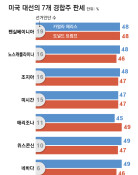Chinese comrades in anti-Japanese struggle with Kim Gu
Chinese comrades in anti-Japanese struggle with Kim Gu
Posted August. 17, 2024 08:01,
Updated August. 17, 2024 08:01

In Jiaxing, Zhejiang Province, China, a small, secretive space lies on the second floor of Baekbeom Kim Gu’s refuge. Hidden beneath the floorboards is an emergency escape hatch leading to the lake. Below the hatch, a wooden boat was always ready, prepared to whisk him away at a moment’s notice. This place is a powerful symbol of the arduous life led by Baekbeom, who sought refuge here from Japanese authorities. Along with key figures of the Korean Provisional Government, Baekbeom moved between Jiaxing, Hangzhou, Nanjing, Chongqing, and other locations, continuing his relentless fight for independence until Korea’s liberation.
The author, a historian specializing in modern Chinese history, delves into Baekbeom’s anti-Japanese activities, detailing how he received crucial support from various Chinese allies in cities like Nanjing. The book vividly recounts the period when Baekbeom joined forces with Chiang Kai-shek’s Nationalist government to wage a joint struggle against Japan. In 1933, Baekbeom met Chiang in Nanjing and secured permission for Korean nationals to enter Chinese military academies. This led to the establishment of a Korean training unit at the Luoyang Military Academy.
With financial backing from the Nationalist government, Baekbeom founded the Korean National Party in 1935, managing to sustain the Provisional Government, which was on the brink of collapse. During the reorganization of the Provisional Government on November 3, 1935, seven of the State Council members were filled with Korean National Party cadres, illustrating how Baekbeom could seize significant influence within the government. The book also compellingly explores the stories of Chinese individuals, like Nationalist Party official Chu Fu-cheng (1873–1948) and the female boatwoman Zhu Aibao, who aided Baekbeom in his escapes and maintained close ties with him.
Sang-Un Kim sukim@donga.com







